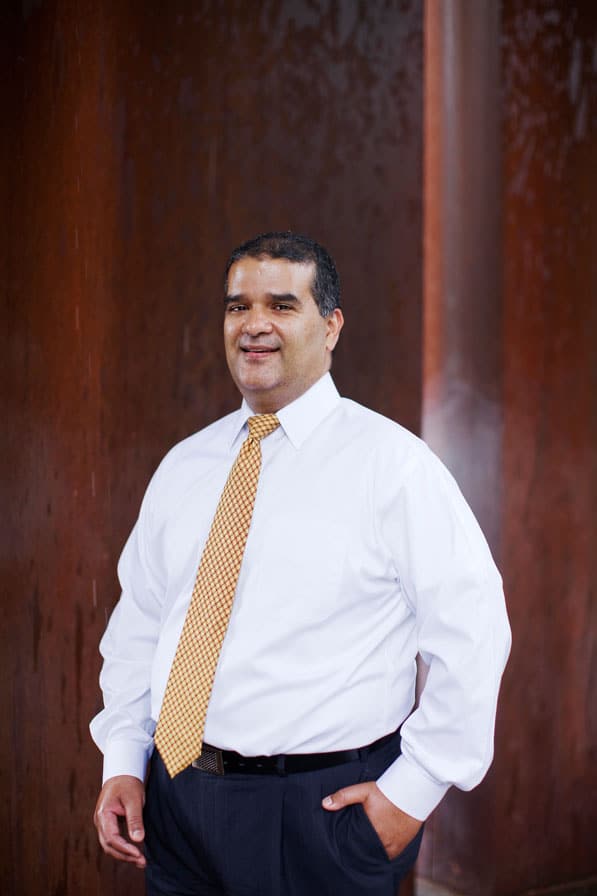
I manage the Office of Legal Affairs. Our office—which is responsible for providing legal services to RIT colleges—came into existence in 2007. Whenever RIT is named as a defendant, it’s our responsibility to hire outside counsel to represent us. Whenever RIT wants to initiate litigation, we work with the appropriate vice presidents to determine if such a course of action is appropriate. Outside of litigation, we do general counsel work, which means providing departments or divisions with answers to their legal questions.
I took a circuitous route to this position. I graduated from Harvard Law School in 1992, and then clerked for a federal district court judge in Rochester. When that assignment was over, I worked in private practice, specializing in labor and employment law for five years. My first in-house position [was] as a labor lawyer with Paychex Inc., a payroll-processing company based in Rochester. One day, out of the blue, someone working for then-attorney general Eliot Spitzer called me looking for someone to head Spitzer’s office in Rochester. I provided him some names and included mine. I got the job and became the assistant attorney general in charge of the Rochester Regional Office for the New York state attorney general. During that time, I got to work with RIT a bit, and after three years, when Spitzer became governor, I applied for and was chosen to be RIT’s first chief legal officer.
I began as a professor at RIT. Each year, RIT hires a diverse individual from the Rochester community to be the Frederick H. Minett Professor. Minett professors share their professional knowledge and experience as adjunct faculty, program leaders, or coordinators of special projects. I taught a class, but after getting to know the college, I decided it would be a good idea for me to explore opportunities to work for RIT full time. I asked about the university’s in-house legal department, and found out they didn’t have one, so I put together a proposal explaining how I thought I’d be able to save them money by streamlining some of the functions. One thing led to another, and I became chief legal officer for RIT.
The biggest challenge of being an in-house lawyer is making sure people get your counsel when they need it.People need to know you’re a resource available for them to use, but not just after they get sued. As an in-house lawyer, you’re a value to an organization when you try to prevent those things from initially happening. You want people to include you in the decision-making process so you can try to ensure that decisions are being made that put the college in a better legal position.
You have to be well educated. Whenever a young lawyer a couple of years out of law school asks me how to work in-house, my first advice is to specialize in something so you can be a resource for the company you want to work for. For me, it was labor law, but it could be anything; just learn it well. Once you learn your craft, the second nugget of advice I offer young lawyers is to network. Know the people in your community that have the jobs you want today, because those are the people who know where the openings are. I always know of in-house openings before any other outside lawyer in the community because I get together with other general counsel quarterly to discuss common issues. Finally, when you go in-house, you’re committing yourself to a particular industry, so be sure that’s the industry you want to be a part of.
I love being on a college campus, but I hate the weather here. RIT has 1,300 acres, filled with students and professors. It’s a great place. But, if I could pick up the college and relocate it someplace warmer, I would.

